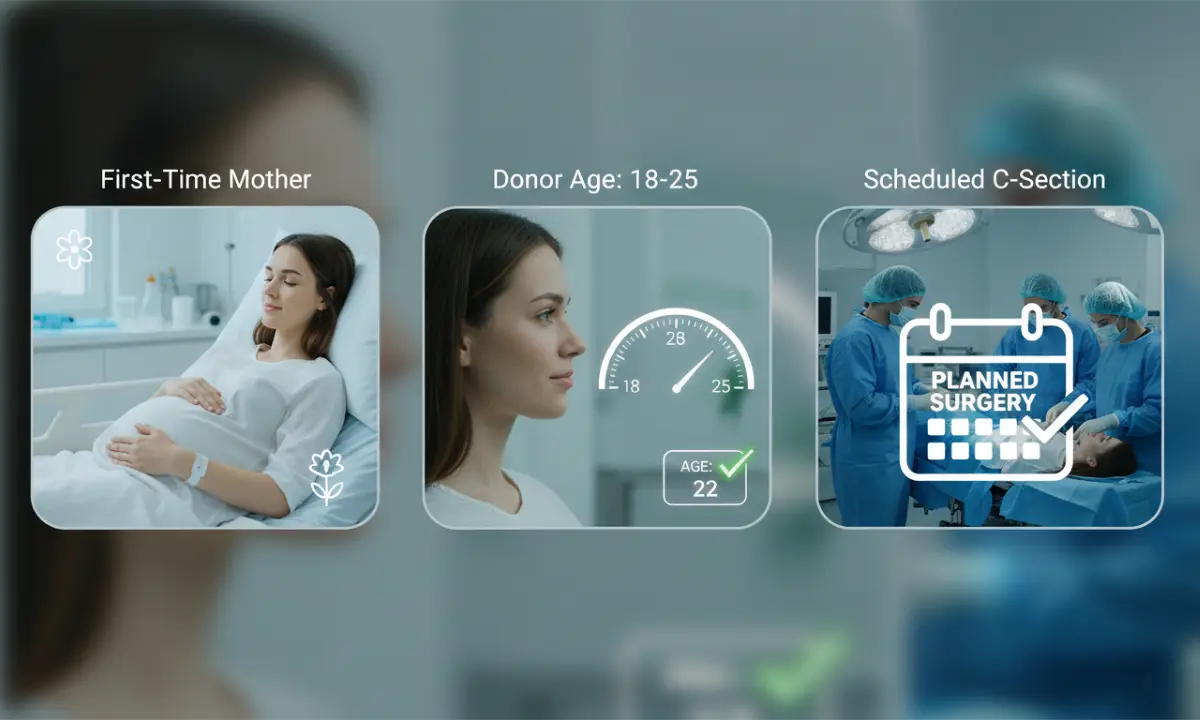
Quality Control and Ethics: IRM’s Rigorous Donor Screening Process
When families explore regenerative medicine, their primary concerns are safety and efficacy. These two pillars rest on a single, non-negotiable foundation: the quality and purity of the stem cells.
Our Autism Stem Cell Treatment at IRM is built on the same strict standards, ensuring safety from donor to delivery.
At the Institute for Regenerative Medicine (IRM), our commitment to patient safety begins long before any treatment, with one of the most rigorous umbilical cord donor screening processes in the industry.
While umbilical cord tissue is an incredibly potent and ethically sound source of mesenchymal stem cells (MSCs), not all cords are created equal. Ensuring the final therapeutic product is sterile, potent, and free of contamination requires extreme diligence.
Learn more about how umbilical cord tissue stem cells are used in therapy to achieve lasting regenerative results at IRM.
Here is a detailed look at the multi-step process that defines our ethical stem cell therapy standards.
Table of Contents
Step 1: The Strict Donor Criteria
Before any medical tests are performed, potential donors must meet strict initial criteria. This initial screening is designed to select for the lowest-risk, highest-vitality demographic.

Step 2: The Comprehensive Medical Gauntlet
A donor who meets these initial criteria is still only a candidate. Next, they undergo a battery of medical and biological tests, identical to those required by international tissue banks. This panel is designed to screen for underlying conditions or infectious agents that could be transmitted.
These measures are vital because the properties of stem cells depend entirely on the biological health and integrity of the donor.
This is not a simple check-up; it is a deep, comprehensive screening that includes:
A donor must test negative across the entire panel, with zero exceptions, to be approved for donation.
For patients comparing regenerative options, here’s how stem cell therapy differs from bone marrow transplant in terms of procedure and recovery.
Step 3: Post-Collection Verification
After a fully screened, approved donor gives birth, the collected umbilical cord tissue is immediately transported to our in-house lab. The process is not over. The tissue is then retested to confirm sterility and rule out microbial contamination that may have occurred during collection.
Explore our state-of-the-art stem cell laboratories to see how we maintain the highest standards of purity and precision.
Only after a donation has passed all three stages. Strict Criteria, Comprehensive Medical Testing, and Post-Collection Verification. Is it approved for cultivation in our lab?
Why This Matters
These rigorous stem cell lab standards are the bedrock of patient safety. This process ensures that every patient at IRM receives a therapeutic product that is not only potent but also ethically sourced and vetted to the highest possible standard of purity and quality. When it comes to regenerative medicine, there is no room for compromise. Discover the benefits of stem cell therapy in Pakistan and how our standards make IRM a trusted leader nationwide.
Learn how IRM ensures comfort during treatment with our specialized approach to anesthesia and autism care.










